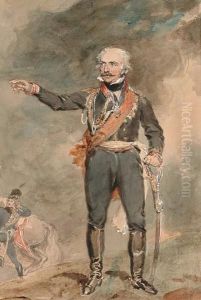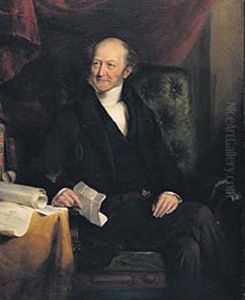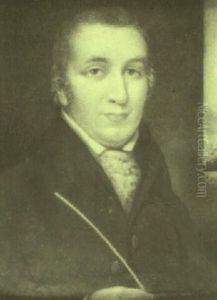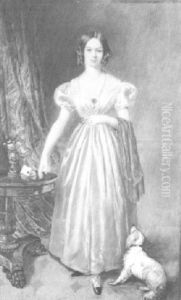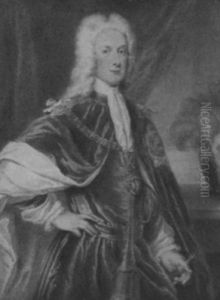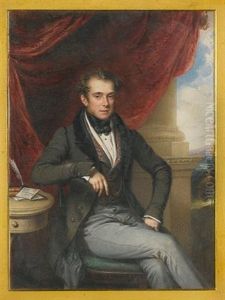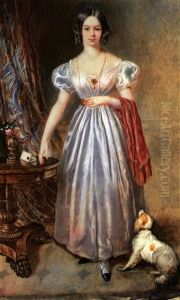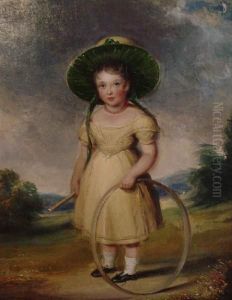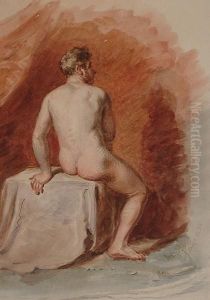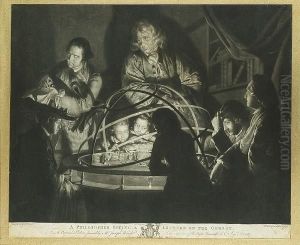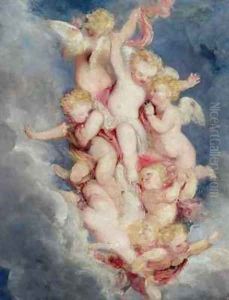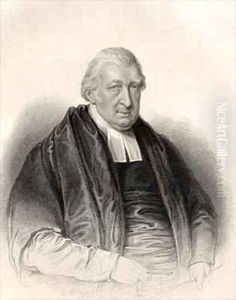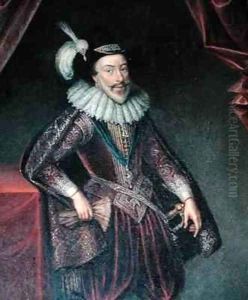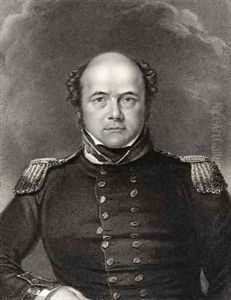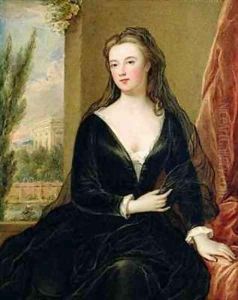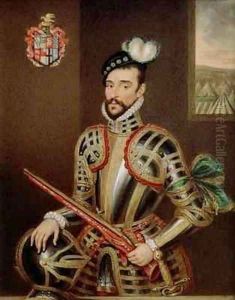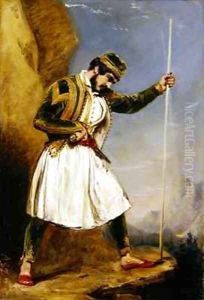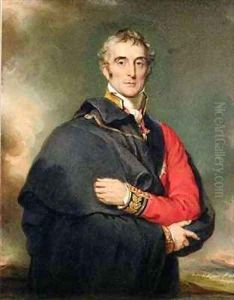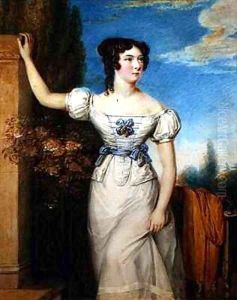William Derby Paintings
William Derby, born in 1786, was an English portrait painter whose legacy, while not as widely celebrated as some of his contemporaries, remains significant in the annals of British art history. His early life is not extensively documented, but it is known that he exhibited a proclivity for the arts at a young age. Derby's career is marked by his adeptness in both miniature and large-scale works, showcasing a versatility that was highly regarded by his patrons.
Derby's professional journey began in earnest when he started to exhibit at the Royal Academy and the British Institution in the early 19th century. His works, primarily portraits, were celebrated for their detailed and lifelike representation, capturing the essence and character of his subjects with remarkable accuracy. He was particularly adept at watercolor, a medium in which he excelled and contributed significantly to its appreciation and development during his lifetime.
One of Derby's most notable contributions to the art world was his involvement in the project 'The History of the Abbey and Palace of Westminster,' for which he executed a series of detailed drawings. These works, completed over several years, were highly praised for their intricate detailing and historical accuracy, cementing Derby's reputation as a skilled draughtsman and artist of historical subjects.
Despite his contributions and the quality of his work, William Derby's name is not as familiar to the general public as some of his contemporaries. This relative obscurity may be attributed to the changing tastes in art and the rise of new art movements during and after his lifetime. Nevertheless, his work continues to be appreciated by art historians and collectors, who recognize his skill and the subtle impact he had on the development of portrait painting and illustration in the 19th century.
William Derby passed away in 1847, leaving behind a body of work that, while perhaps not as celebrated as that of some of his peers, offers a fascinating glimpse into the artistic and societal nuances of his time. His legacy is preserved in the collections of various British institutions, where his portraits and drawings continue to be studied and admired for their technical proficiency and historical significance.
